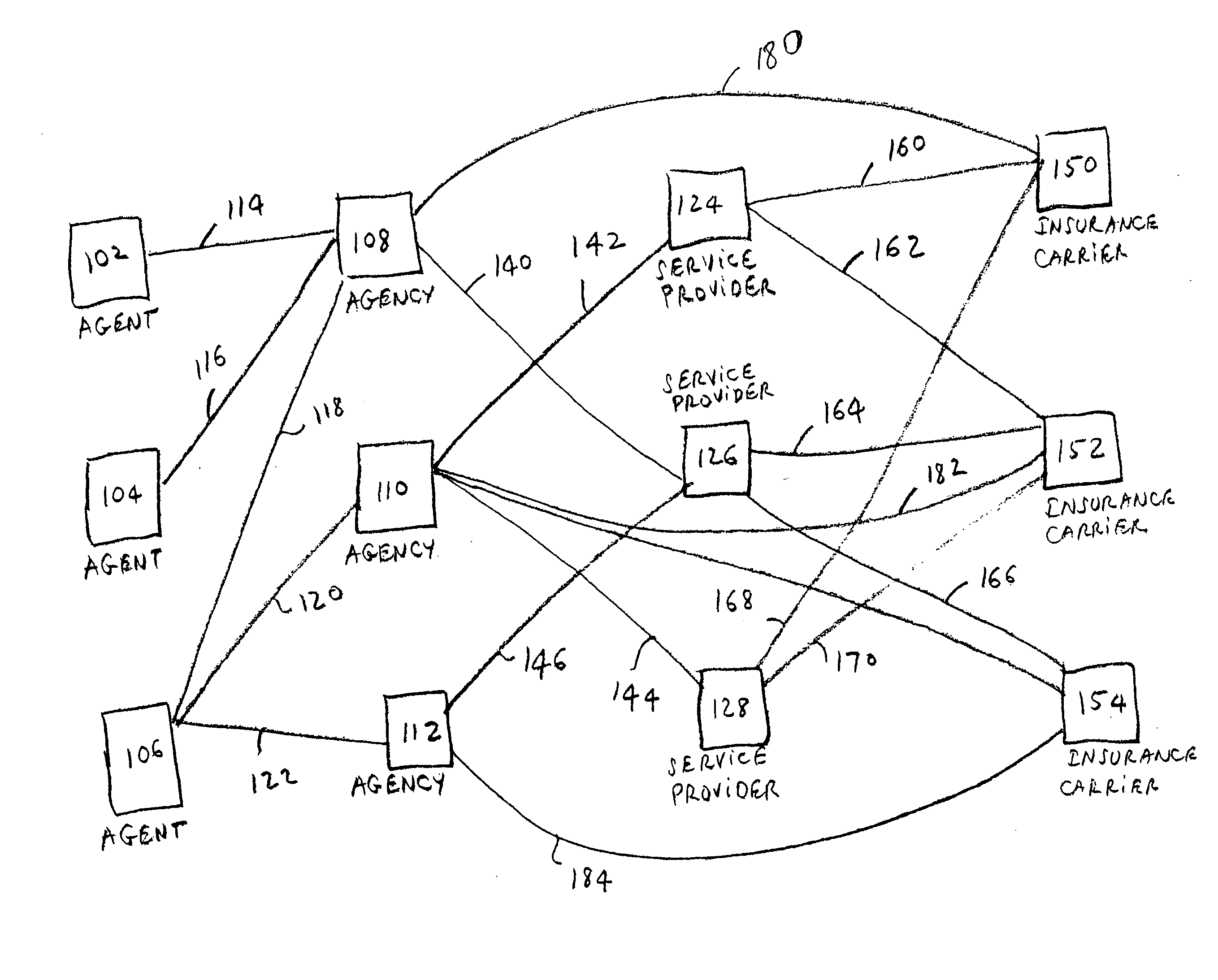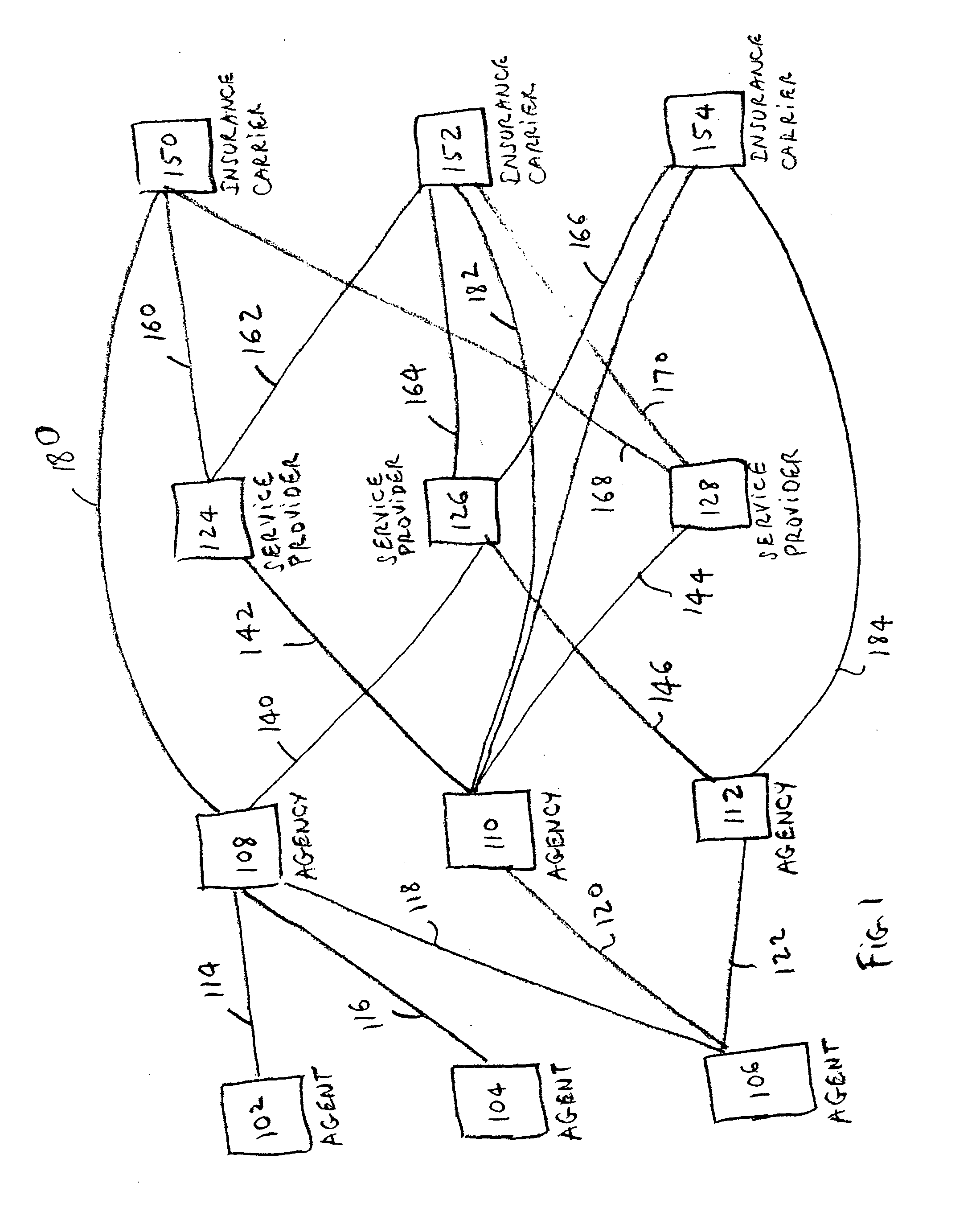As will be discussed in connection with FIG. 2, this fact currently contributes to a huge amount of wasted and / or duplicate effort and inefficiency in the insurance underwriting and
management process.
However, it is observed by the inventors herein that the current process for insurance underwriting is extremely inefficient and time-consuming.
At every step in the chain, there is a significant amount of duplication of efforts and inefficiency.
Additionally, the insurance carrier and / or service providers often receive disparate information related to a case at different times. A significant amount of effort must be spent correlating received pieces of information, all belonging to different cases and arriving at different times. Current industry practice employs the applicant's name and / or
date of birth and / or some form of government identification such as an applicant's
social security number for correlation.
Yet, it is not unusual that one of the participants along the chain mis-transcribes a name, a birth date, and / or a
social security number, giving rise to
confusion for other participants down the chain.
The lack of coordination gives rise to inefficiency.
For service providers, there is no efficient way to receive service orders from different agencies and / or insurance carriers.
Service providers also have difficulties getting status information regarding a particular case from the various laboratories.
If a
vial of blood sample breaks during transmit, and the result is not transmitted to the insurance carrier timely, the
service provider may not know until it receives a call from the agency, asking why the insurance carrier has not received the requisite test result.
Under this paradigm, the aforementioned problem in correlating information means that a
service provider must not only devote human resources to correlate data received from the various agencies but must also devote human resources to answer calls and / or emails from agents, agencies, and insurance carriers about the progress and / or status information on service orders.
Given the different participants involved, with each participant employing its own
proprietary software to process and monitor cases, there is no easy way for agents and agencies these days to easily monitor the status information pertaining to a case as it moves among the participants, particularly after the case has been forwarded to the service providers and the insurance carrier.
More importantly, agents serve as the
customer interface function, and the inability to quickly obtain status information in order to meaningfully respond to status inquiries from applicants significantly lowers customer satisfaction.
In some cases, the applicant may be sufficiently frustrated about the
delay and lack of information to terminate the process with an agent, opting to reapply for insurance with a different agency that can underwrite the policy in a shorter amount of time.
In some cases, the applicant may simply quit the process entirely out of
frustration.
Perhaps the most visible manifestation of the inefficiency of the current underwriting process can be seen in the average and standard deviation values for the time required to complete a typical life insurance underwriting cycle.
From an applicant perspective, the
delay is especially frustrating, especially since meaningful status information is difficult to obtain from his agent.
From the perspectives of the agents and agencies, the
delay means that they are getting paid late for the work done months earlier.
For insurance carriers, the inefficiency translates into additional cost in
processing each proposed insurance contract.
The lengthy insurance underwriting cycle also delay the point in time where an insurance carrier can deem a pending insurance contract a premium-earning policy.
 Login to View More
Login to View More  Login to View More
Login to View More 


